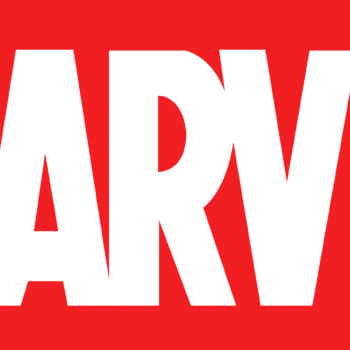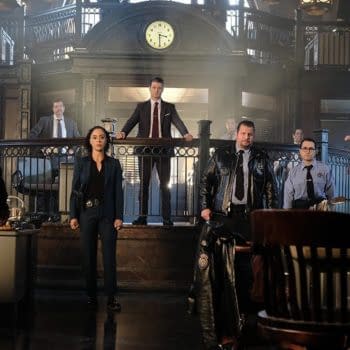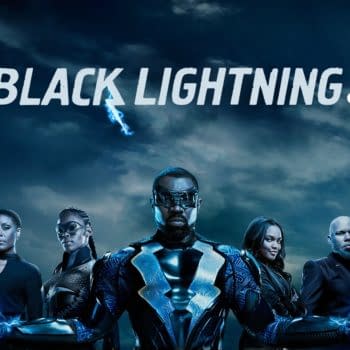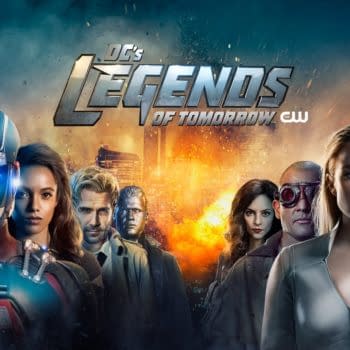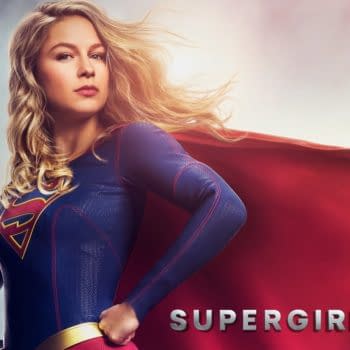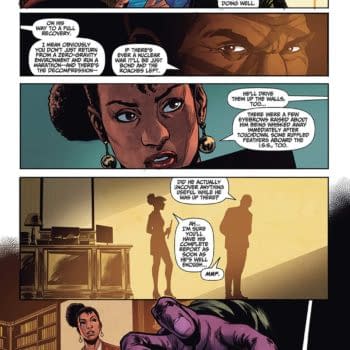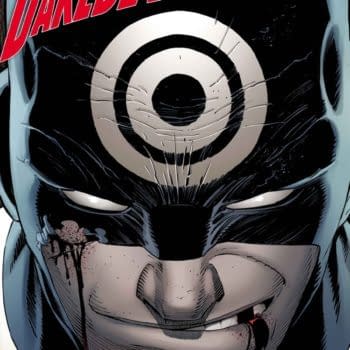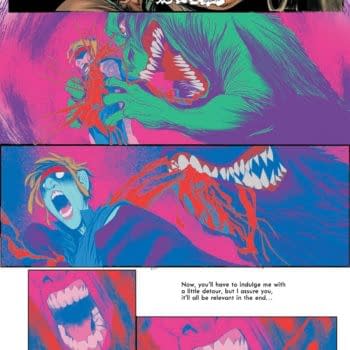Posted in: Comics, NYCC | Tagged: Comics, David Baxter, entertainment, Jessica Chautin, Leeanna Ladouceur, NYCC, Tim Ferrara, Valeria Acklin
Body Images And How We See Ourselves in Comics – Panel Discussion At NYCC
By Hugh Sheridan

The panel was made up of comic creators Tim Ferrara and David Baxter, librarians Jessica Chautin and Leeanna Ladouceur, editor Annie Stoll and family physician Birgit Pols.
The discussion was about media representations of different body images – what they are is, how they have changed over time and how depictions of them can and should be improved
Physician Pols talked about how she has seen in her work that poor personal body images have deleterious effcts on people. She said that most people have an idea of what the perfect body type is and they feel that they do not measure up it.
Acklin talked about how our popular idea of the ideal body has changed over time – for females in the 1940s the ideal had broad shoulders, while in the 50s it became more of an hourglass shape, in the 80s the super model tall and thin look became popular while nowadays "even the New York Times uses the term "bootylicious"
Pols was asked if there was a medical opinion on what was a healthy body image?
She replied that there isn't really, doctors use BMI – a calculation using height and weight measurements that was developed by an insurance company and that does not take different body types in to consideration.
Jessica Chautin stated that these unhealthy cultural norms about body issues are not new – referring to how people have whitened their faces or bound their feet in the past to change their appearance.

Tim Ferrara talked about how just showing "fit young people" in comics is not realistic – he likes to depict as diverse a world as possible with plenty of different differently shaped people.
Annie Stoll said that creators have a responsibility to improve cultural depictions of body types. Just telling people about this stuff is not effective, but art can change minds by "showing a different way".
Stoll also works in the music industry and she has had "real arguments" over the use of photoshop on images featuring artists – she feels that their "way too much retouching" which helps create unreal expectations for beauty in the public mind. She argues that there is nothing wrong with having super sexy images – but she thinks every body shape can be depicted sexily if done stylishly.
Jessica Chautin loved the X-Men growing up, but she found the female characters were all shown as "ultra-thin with impossibly long legs". She remembers a friend telling her she should not cosplay as Jean Grey because she was not tall like Grey, which upset her.
Stoll said that similarly she wants to cosplay as Black Cat, who is usually depicted as a very different body type from her. But "part of the joy of cosplay is that you can take a character and remix them".
David Baxter said that is very true and that in cosplay and burlesque there are a lot of people who wont dress up as certain charcters because they feel that they don't fit the body type " I can't do that im not 11' or whatever they are usually shown as". But that representation of different types like this is very important and the majority of the online reaction is very positive.
Ferrara said that it was not hard to understand why depictions of body types in media are so uniform – "because it's a safe thing to do – it's what's sold in the past". The only way to change things is to make new more diverse things and show that there is an audience for them.
Acklin asked the panel that if Super Heroes are meant to represent the best of us what does it do to our identity/psychology when their bodies are so unrealistic?

The discussion moved on to depictions of differently abled people in comics.
Chautin talked about how it would be nice to see a differently abled character who "doesn't need to be cured" or whose character is not defined by searching for the cure to their condition.
Stoll talked about some research which had found that in comics "a lot of times disabled female characters never get cured while guys do"
Ferrara discussed Oracle and some people reacted badly when she was "cured" – but that how she was injured in the first place was "pure sexism" and it was righting a wrong.
He praised Hawkeye as a character that is deaf (he wears a hearing aid) – his deafness is not a defining part of his character.
Baxter also talked about the recent Ghostbusters movie, and how it was actually great but seems to have been perceived as a failure. So Hollywood now thinks that people don't want movies with 4 female leads.
"But Green Lantern didn't kill Super Hero movies" quipped Ferrara.
Acklin closed up by discussing how the librarians how they can help promote diversity in their communities with their work.
Series such as Rat Queens, LumberJanes, Steven Universe and Faith were mentioned as great books that libraries should stock and people should read.



